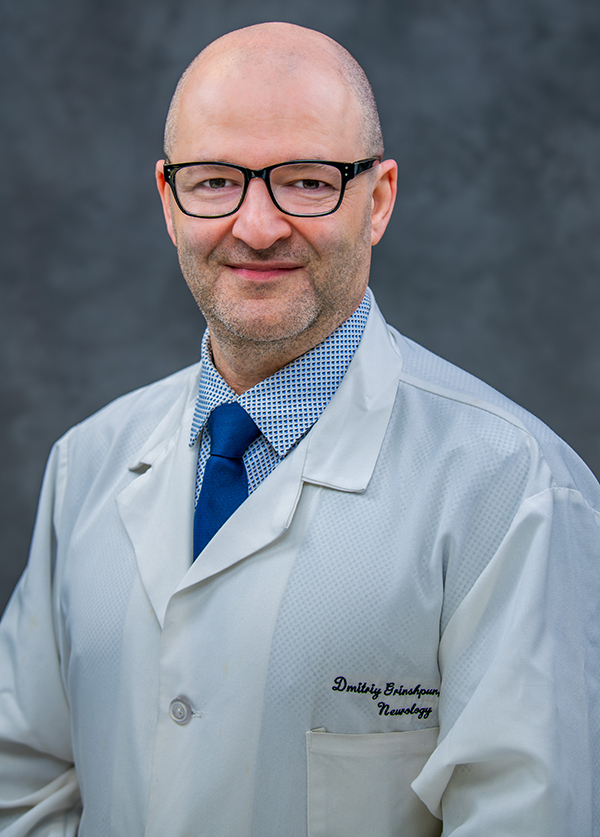Preventing Stroke: What is Your Risk?
Stroke is a leading cause of death and long-term disability. One of our neurologists explains what you need to know about risk, prevention and how to act fast

Chief of Neurology, Stroke Center Director
NYC Health + Hospitals/ Woodhull
If you have a family member or friend who has had a stroke, you know the event can be life-changing.
According to the Centers for Disease Control, every 40 seconds, someone in the United States has a stroke and every 3 minutes someone dies from a stroke. Stroke is also a leading cause of serious long-term disability and reduces mobility in more than half of stroke survivors 65 and older.
To help us understand what strokes are and reduce the risk, we spoke with Dr. Dmitriy Grinshpun, MD, Chief of Neurology and Director of the Stroke Center at NYC Health + Hospitals/ Woodhull.
Q: What exactly is a stroke? Are there different kinds?
A: A stroke occurs when blood flow to the brain is disrupted.
Ischemic Stroke is the most common, it happens when a blood vessel supplying the brain becomes blocked, often by a blood clot. A Hemorrhagic Stroke occurs when a blood vessel in the brain ruptures and bleeds.
A TIA (transient ischemic attack), or “mini stroke”, is caused by a temporary clot.
Q: In your experience, what is the one thing your patients, or people in general, don’t know about strokes?
A: In my experience, the biggest misconception I encounter is that strokes only happen to older adults. While age is a risk factor, we’re seeing more younger individuals affected. This can lead to delays in recognizing symptoms and rapid treatment, which is essential in stroke management.
Q: Are they preventable? Are there ways to predict when one is going to happen: tell-tale symptoms perhaps?
A: Yes, absolutely, many strokes are preventable. People should take proactive steps to prevent stroke by focusing on a healthy lifestyle
Although we can’t predict when a stroke will happen there are definite warning signs that everyone should be aware of.
We use the acronym BE FAST:
- Balance: Sudden loss of balance or coordination.
- Eyes: Sudden trouble seeing in one or both eyes.
- Face: Sudden drooping of the face, often on one side.
- Arm: Sudden weakness or numbness in an arm or leg, especially on one side of the body.
- Speech: Sudden difficulty speaking or understanding speech.
- Time: Time is critical! If you notice any of these signs, call 911 immediately.
Q: Are there any screening tools the way there are for colon cancer and breast cancer?
A: We don’t have routine screening tools specifically for stroke in asymptomatic individuals. However, for individuals with known risk factors like atrial fibrillation or carotid artery disease, we may use tools like carotid ultrasounds or echocardiograms to assess their risk.
Q: What’s the best treatment?
A: If you’re having a stroke, time is critical. Immediate treatment may reduce the long-term effects of a stroke and even prevent death. Treatment will vary depending on what type of stroke you had.
Q: According to a recent finding by AHA journals, the incidence of young-onset ischemic strokes is rising. Do we know why that is?
A: The rise in young-onset ischemic strokes is driven by both traditional (such as obesity, hypertension) and emerging risk factors like traumatic brain injury. Differences in access to healthcare and lifestyle habits are also contributing factors.
Q: What should young people do to prevent stroke?
A: The rise in young-onset ischemic strokes is driven by both traditional (such as obesity, hypertension) and emerging risk factors like traumatic brain injury. Differences in access to healthcare and lifestyle habits are also contributing factors.
Q: How can you know what your risk factors are?
A: The best way to know your risk factors is to have regular checkups with your primary care physician. They can assess your medical history, family history, and lifestyle habits.
Q: Some people recommend avoiding salt and talking about “hardening of the arteries.” Is that still a thing?
A: Yes, they were definitely right to be cautious and take proactive measures. Hardening of the arteries refers to atherosclerosis, which is a big cause of stroke. Plaque can build up in the artery walls, causing them to narrow, and making it harder for blood to flow. The plaque can rupture causing a blood clot that blocks blood flow and can lead to stroke. Too much salt in the diet can lead to elevated blood pressure which can increase stroke risk.
Q: How much of a role does diet play in stroke risk?
A: Diet plays a huge role in stroke risk. Eating well can help reduce your risk of having a stroke or prevent a second one. When your weight is in a healthy range, your body circulates blood more efficiently.
Q: What do you personally do to stay healthy and avoid your risk of stroke?
A: I maintain a healthy diet and try to stay active with regular exercise. I also follow up with my PCP regularly.
